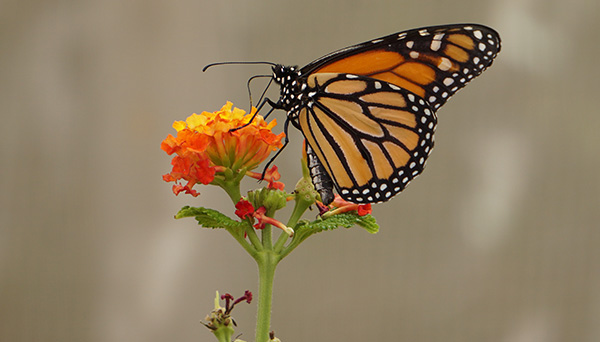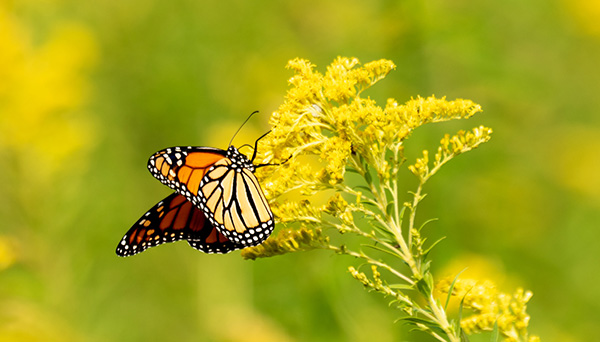Conserving the Monarch Butterfly and Promoting Sustainable Livelihoods
Status: Completed
Operational Plan: 2010
This project provided support for the implementation of the North American Monarch Conservation Plan, by focusing on the use of market forces to promote conservation of over-wintering and flyway habitat.
The CEC sponsored three community projects drawn from the 2009 analysis of existing projects and initiatives within the Monarch Butterfly Biosphere Reserve (MBBR). The leaders of these projects attended a community capacity-building workshop, where they developed a plan of action to identify sustainable economic approaches to support conservation efforts and improve biodiversity conservation. This effort fostered activities aimed at reducing pressure on key monarch habitat, particularly in over-wintering areas, offering improved livelihoods in the local communities.
- The CEC co-sponsored the North American Monarch Monitoring Network (MonarchNet) to compile and analyze monitoring data sets in North America and supported the development of a mobile application to enhance monarch observational data.
- Check out the app!

Background
The development of the North American Monarch Conservation Plan was initiated in December 2006 at the Monarch Flyway Conservation Workshop in Mission, Texas, and furthered at the March 2007 Foro Regional Mariposa Monarca in Morelia, Mexico. This initiative—endorsed by the Trilateral Committee for Wildlife and Ecosystem Conservation and Management in 2007—is focused on conservation of the monarch butterfly and its migratory phenomenon throughout the trinational flyway.
Rational
The monarch butterfly (Danaus plexippus), along with its migratory pattern unparalleled in nature, is an iconic species with considerable trinational significance—emblematic of the interdependence of North American ecosystems. The exceptional monarch migration phenomenon has attracted significant conservation effort and scientific attention, and was inscribed in 1983 on the IUCN Red List of Endangered Species. In July 2008, the UNESCO World Heritage Committee recognized the montane protected areas in Mexico, comprising the over-wintering sites of the monarch butterfly, as a World Heritage Site for precisely the same reasons—joining a distinctive list of 174 natural sites around the world of outstanding universal value.
Key Activities
Work described here concludes tasks initiated in 2009 but postponed due to recommendations from the project task group. All tasks are designed to complete this work and draw these to a logical conclusion in 2010. Tasks conform to priority actions identified in the North American Monarch Conservation Plan (NAMCP):
- Funding of community projects in the Mexican over-wintering sites selected from the 2009 analysis;
- Ongoing training in standardized monarch monitoring techniques completed, following from the results of the October tri-national 2008 monitoring training workshop; and,
- Development of tools that improve access to monarch observational data for the scientific and conservation communities.
Achievements
- Adoption of effective trinational strategies and programs to address monarch habitat loss and degradation; and
- Healthy monarch populations and conserved habitats throughout the North American migration flyway.
Related Work

Engaging Farmers and Other Landowners to Support Monarch Butterfly and Pollinator Conservation
Operational Plan 2015 - 2016

